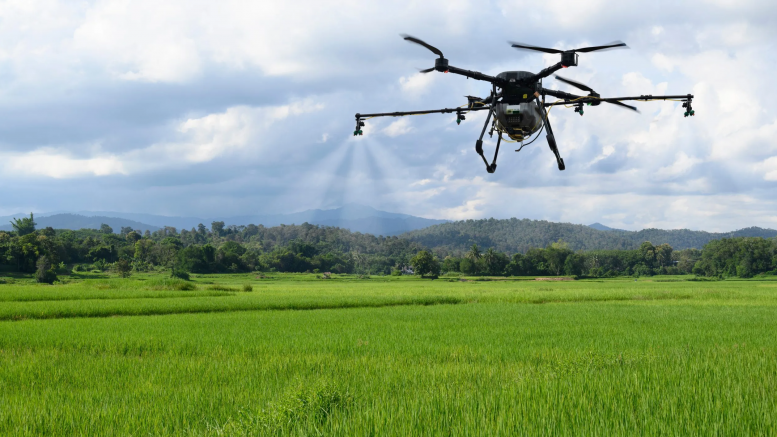“…drones are a great evolution in terms of safety, as they simply present much less drift than conventional planes…”
Ulisses Antuniassi is a professor at the Faculty of Agricultural Sciences of the State University of São Paulo, an agronomist graduated from the State University of Londrina, M.Sc and Ph.D in agronomy from the State University of São Paulo, and a postdoctoral fellow from the Silsoe Research Institute.
Antuniassi is a specialist in pesticide and adjuvant application technology and in precision agriculture.
The use of drones in agriculture was regulated in Brazil by the Ministry of Agriculture only in 2021, through Ordinance No. 298. Its main purposes are: mapping areas, control of planting failures, identification of weeds and pests, and pesticide application.

Ulisses Antuniassi, professor at Unesp
AgriBrasilis – You stated that the spraying drift via drone spraying is less than what is caused by planes, but twice that causes by ground equipments. Is the use of drones a step backwards for the effectiveness of pesticide spraying ? Should this get better as the technology advances?
Ulisses Antuniassi – This is a question that originates from data from only one survey, and that should not be extrapolated to all situations.
This drift proportion data was used as a counterpoint to the safety range imposed by the Ordinance No. 298, from the Ministry of Agriculture, for the usage of spraying drones, that provides for a minimum distance of 20 m for targets. What we did was highlight the drift recorded for pesticide spraying using the three modalities (land, conventional air and drone) at exactly 20 m, to compare the realities of each modality. This should not be extrapolated to all distances and application scenarios.
I don’t agree that drones represent a step backwards. Drones are an aerial platform (that sprays at 3 m height), and therefore it is not like a ground platform, that applies at 0.5 m height. Therefore, drones have to be compared to conventional airplanes. In this context, drones are a great evolution in terms of safety, as they simply present much less spraying drift than conventional planes.
I understand that drones would need safety ranges greater than 20 m for products with a greater impact in terms of drift. This distance has to be studied on a case-by-case basis and placed on the leaflet for each product.
AgriBrasilis – What are the main precautions to avoid drift during agricultural spraying?
Ulisses Antuniassi – To avoid drift we should follow the concepts of good practices. This answer would be too long, but I can summarize it as follows:
- Technical monitoring of applications;
- Respect for the appropriate meteorological conditions provided for in the product’s leaflet;
- Respect for the class of droplets recommended on the leaflet for each product;
- Use of drift-reducing techniques (DRT);
- Respect for the borders and good knowledge of the surroundings of the agricultural lands;
- Respect for relationship protocols with the population and other farmers who live around the applied areas.
AgriBrasilis – The usage of drones for spraying is growing, but this modality is still not recommended in most pesticide leaflets. What are the differences regarding factors such as dilution, concentration, application efficiency and other aspects?
Ulisses Antuniassi – Drones should be seen as a new application modality and the recommendations in leaflets should be reviewed on a case-by-case basis, so that the application parameters are optimized in each scenario. For example, in drone applications we use spray concentrations similar to conventional aerial applications, but the droplet generation technology is more similar to that used in terrestrial application. This can cause efficacy issues in applications and needs to be reassessed for each product individually.
AgriBrasilis – The drones circumvent the ban on aerial spraying in the few places that have banned the use of agricultural aircraft in the country. Do you consider that drones and agricultural aircraft should be treated in the same way by legislation? Why?
Ulisses Antuniassi – I don’t agree with the term “circumvent”. Drones need to be seen as a new modality and, therefore, they should have specific rules.
Drones can be used in any situation where a conventional aircraft would be used (this is what Ordinance No. 298 says), but the opposite is not true, mainly because of drift.
Thus, drones can be used in all crops where conventional aerial application is used.
READ MORE:

